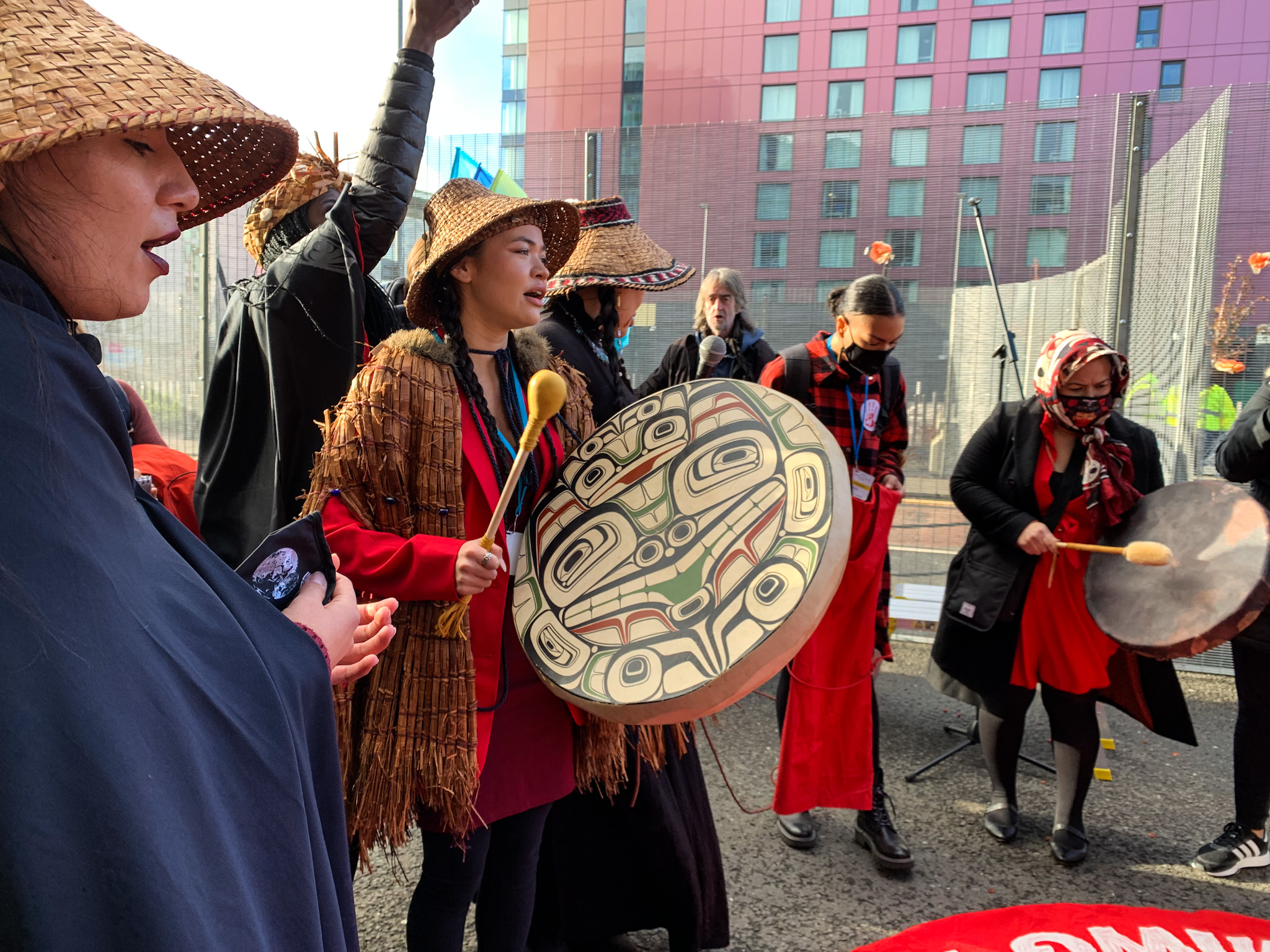
- Details
- By Leala Pourier
At the 26th annual United Nations Climate Conference (COP26) held in Glasgow, Scotland, 197 nations and territories are meeting to discuss and implement solutions to climate change. Outside the formal meetings, activists connected environmental issues to the issue of missing and murdered Indigenous women, girls, and two spirit individuals.
[Special to Native News Online, Leala Pourier is providing on-the-ground coverage of COP26 from Glasgow.]
COP26 is split into two sectors: The Blue Zone and the Green Zone. The Blue Zone is only accessible to political officials and accredited individuals or organizations and is held at the Scottish Event Center (SEC). This is where the large discussions and negotiations regarding climate change take place. The Green Zone is where other organizations and individuals can showcase the work they have done and plan to do, without being a part of any major decision making.
On November 9th, a group of Indigenous peoples led a demonstration inside the Blue Zone, the most exclusive part of COP26, that continued as a rally just outside the barricade into the SEC. Together, they walked out of the SEC singing and drumming in solidarity and remembrance of all missing and murdered Indigenous women, girls, and two spirit individuals (MMIWG2S). These specific groups of people are often targeted for violence, especially near rural places of resource extraction, such as oil fields and mining camps. At the rally, Indigenous women marched and delivered speeches detailing these tragedies and emphasising the importance of acting to stop the violence.
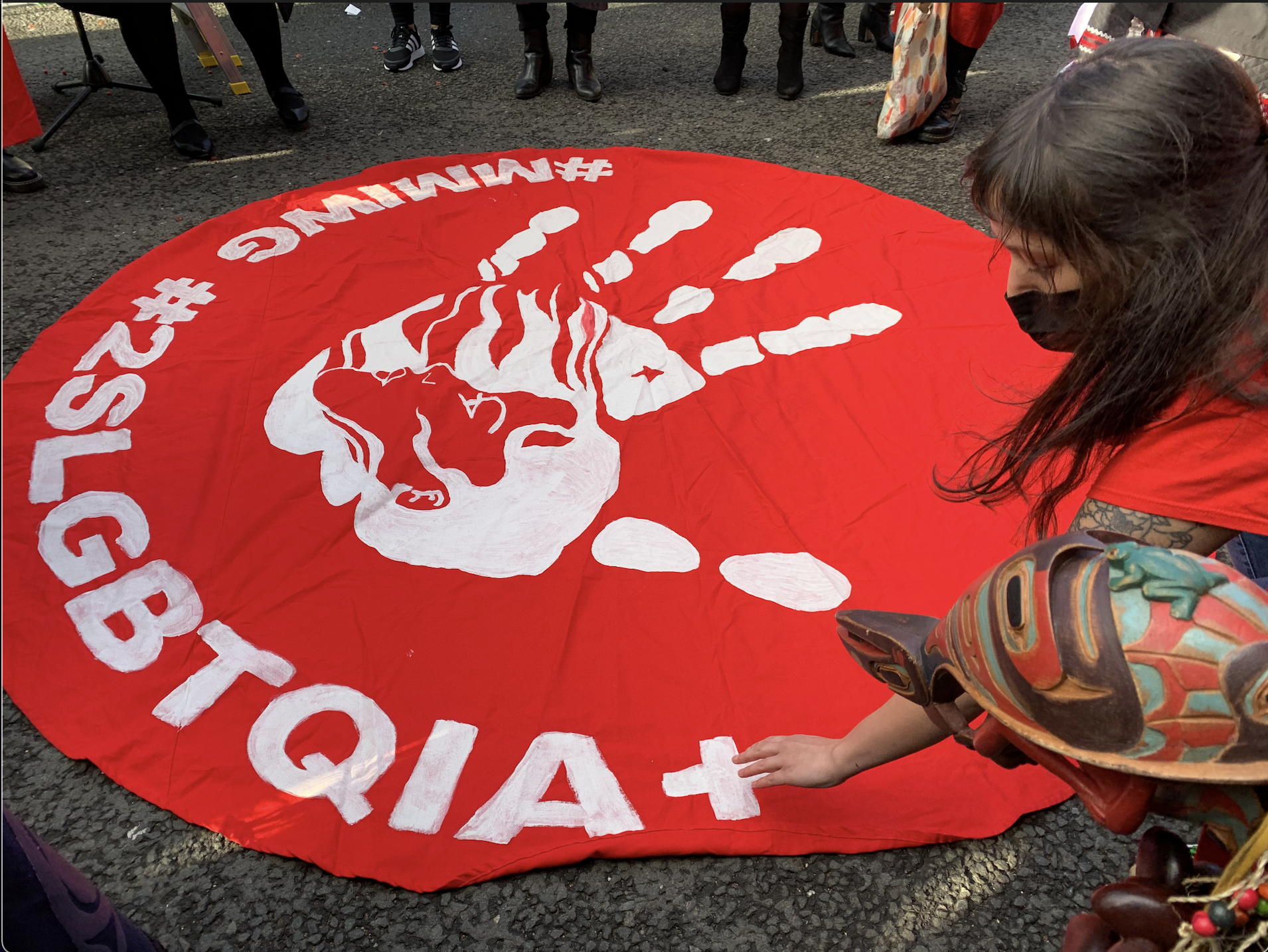 Circular banner displaying a handprint, a common symbol for the MMIWG2S movement. The banner was carried out with the marchers and placed on the ground to create space for keeping the area in front of the platform open, and to give the audience a clearer view of the speakers during the rally. (Photo/Leala Pourier)
Circular banner displaying a handprint, a common symbol for the MMIWG2S movement. The banner was carried out with the marchers and placed on the ground to create space for keeping the area in front of the platform open, and to give the audience a clearer view of the speakers during the rally. (Photo/Leala Pourier)
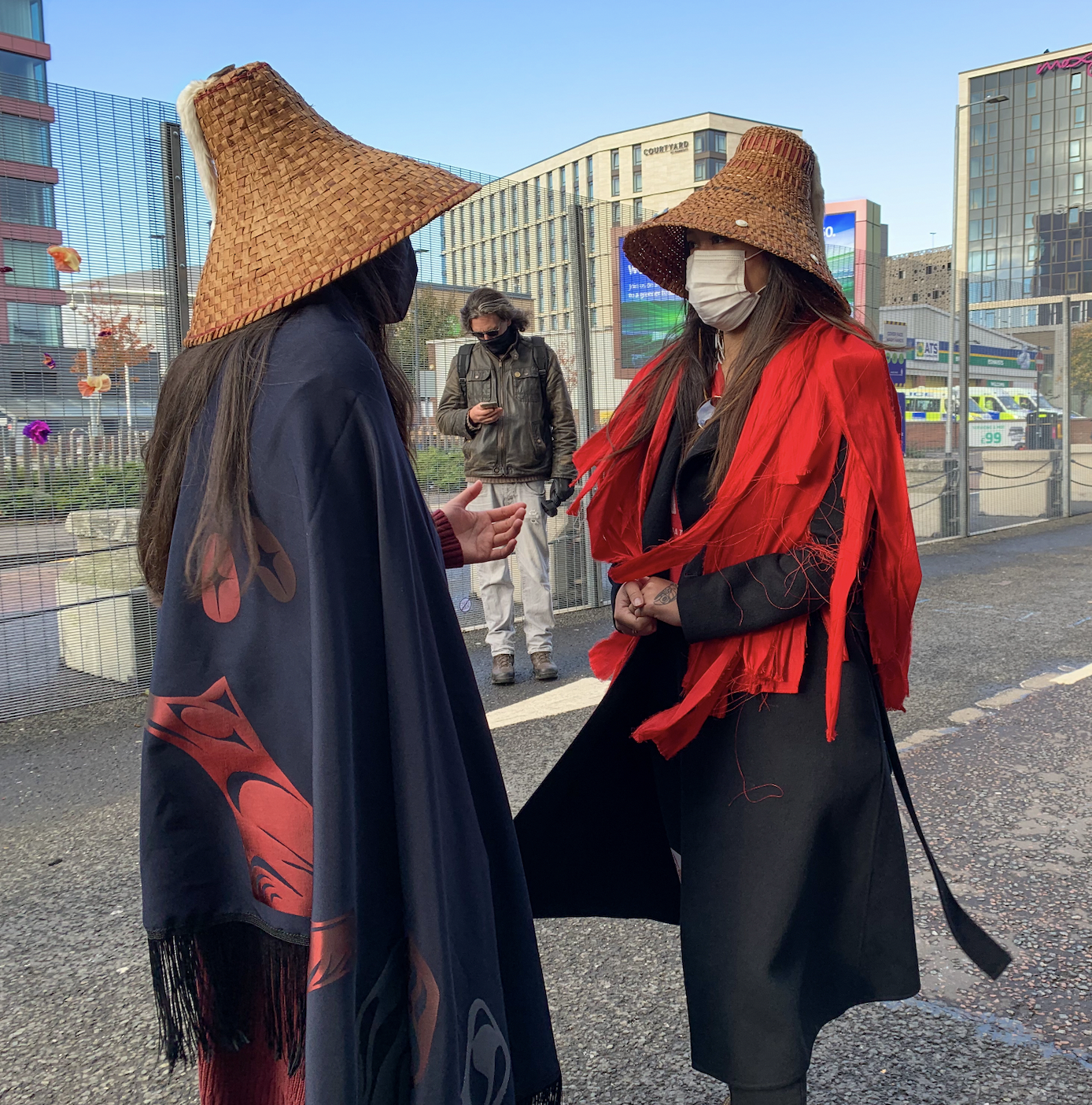 Two young First Nations women talking prior to the rally. The color red is often used in the imagery and messaging of MMIWG2S. (Photo/Leala Pourier)
Two young First Nations women talking prior to the rally. The color red is often used in the imagery and messaging of MMIWG2S. (Photo/Leala Pourier)
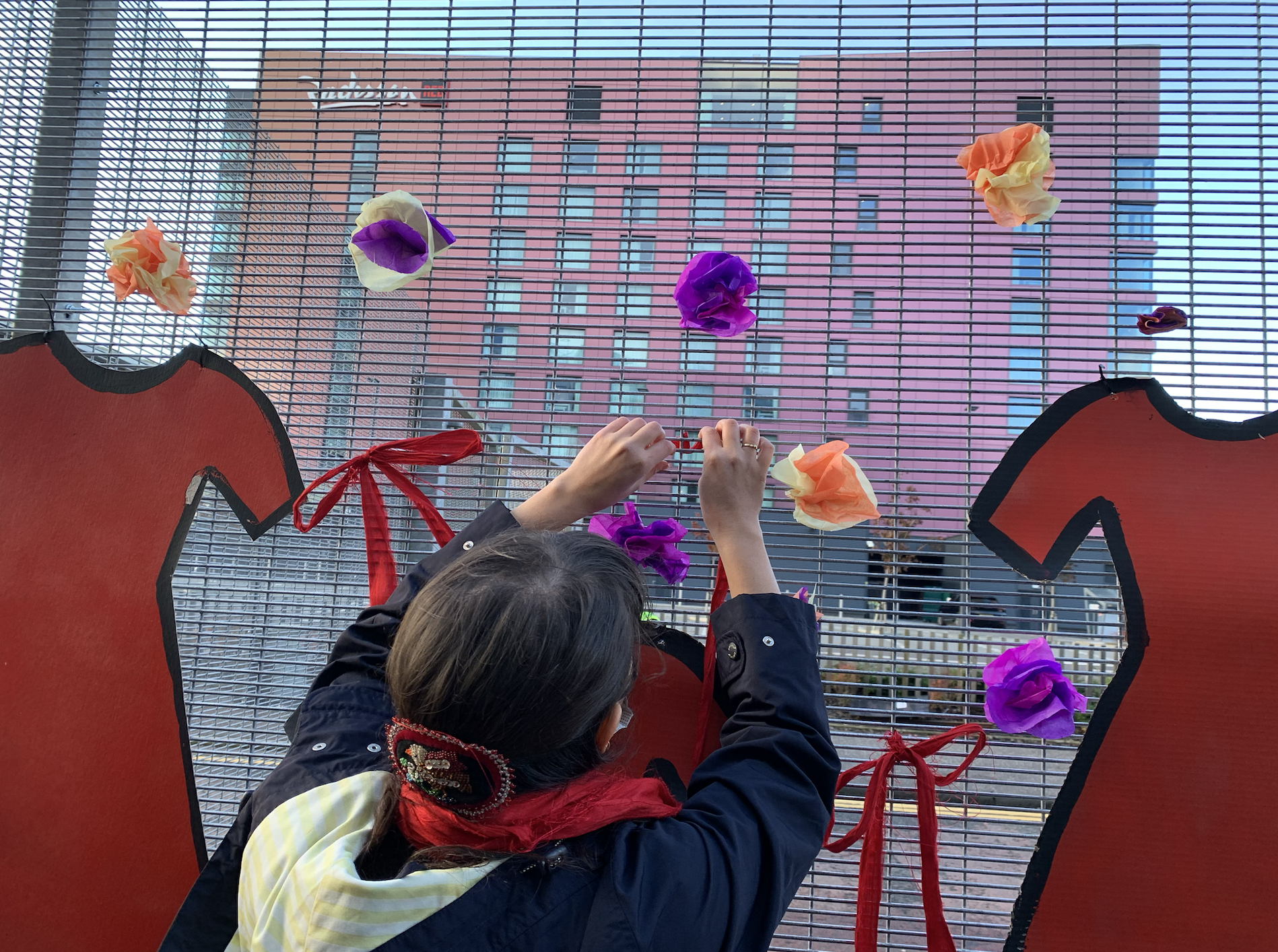
Indigenous woman tying red fabric to the fence, creating an impromptu memorial for all the missing and murdered Indigenous women and girls. (Photo/Leala Pourier)
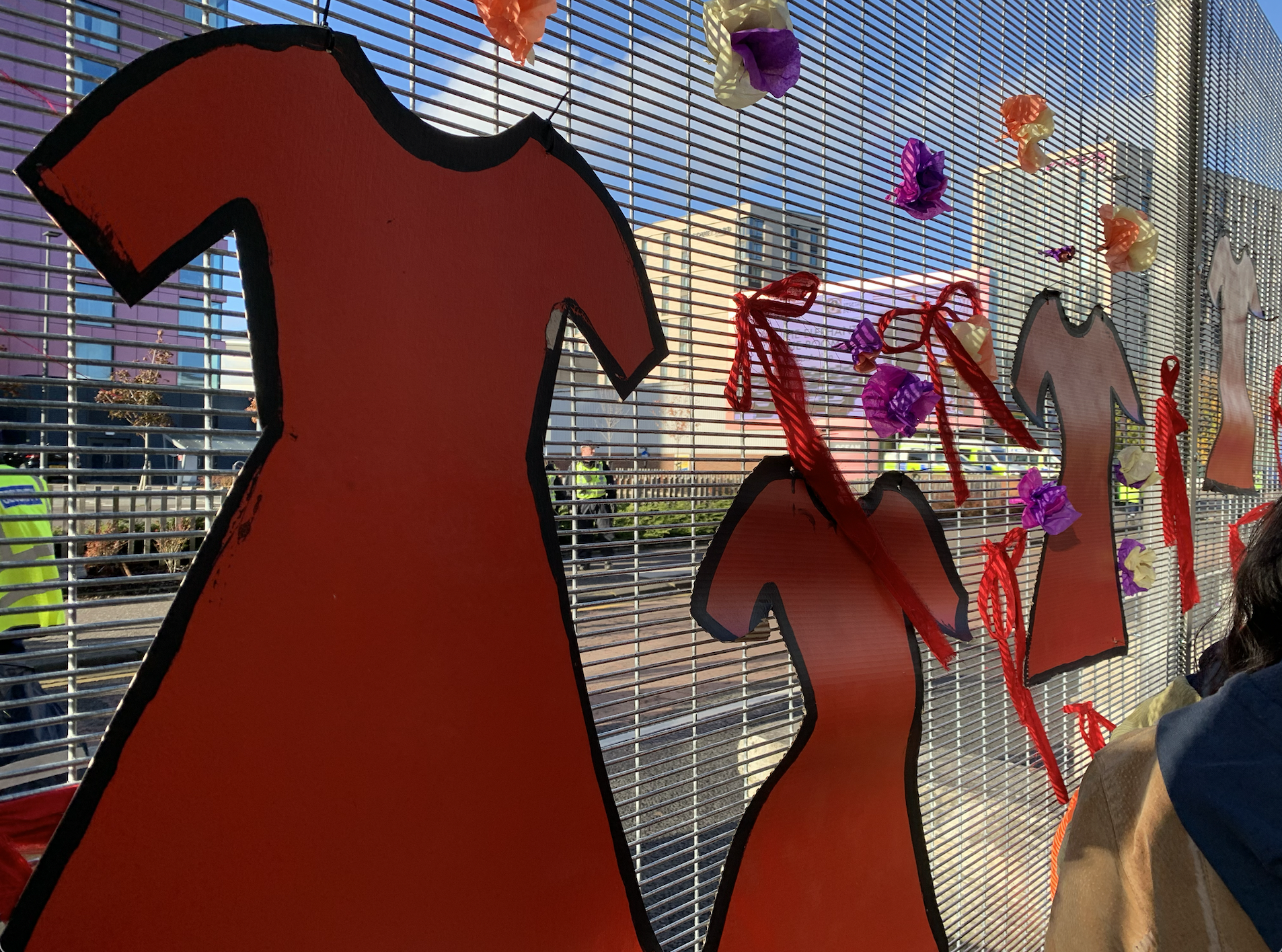 Temporary memorial on the barrier fence of the Blue Zone for all the missing and murdered Indigenous women, girls and two spirit individuals. (Photo/Leala Pourier)
Temporary memorial on the barrier fence of the Blue Zone for all the missing and murdered Indigenous women, girls and two spirit individuals. (Photo/Leala Pourier)
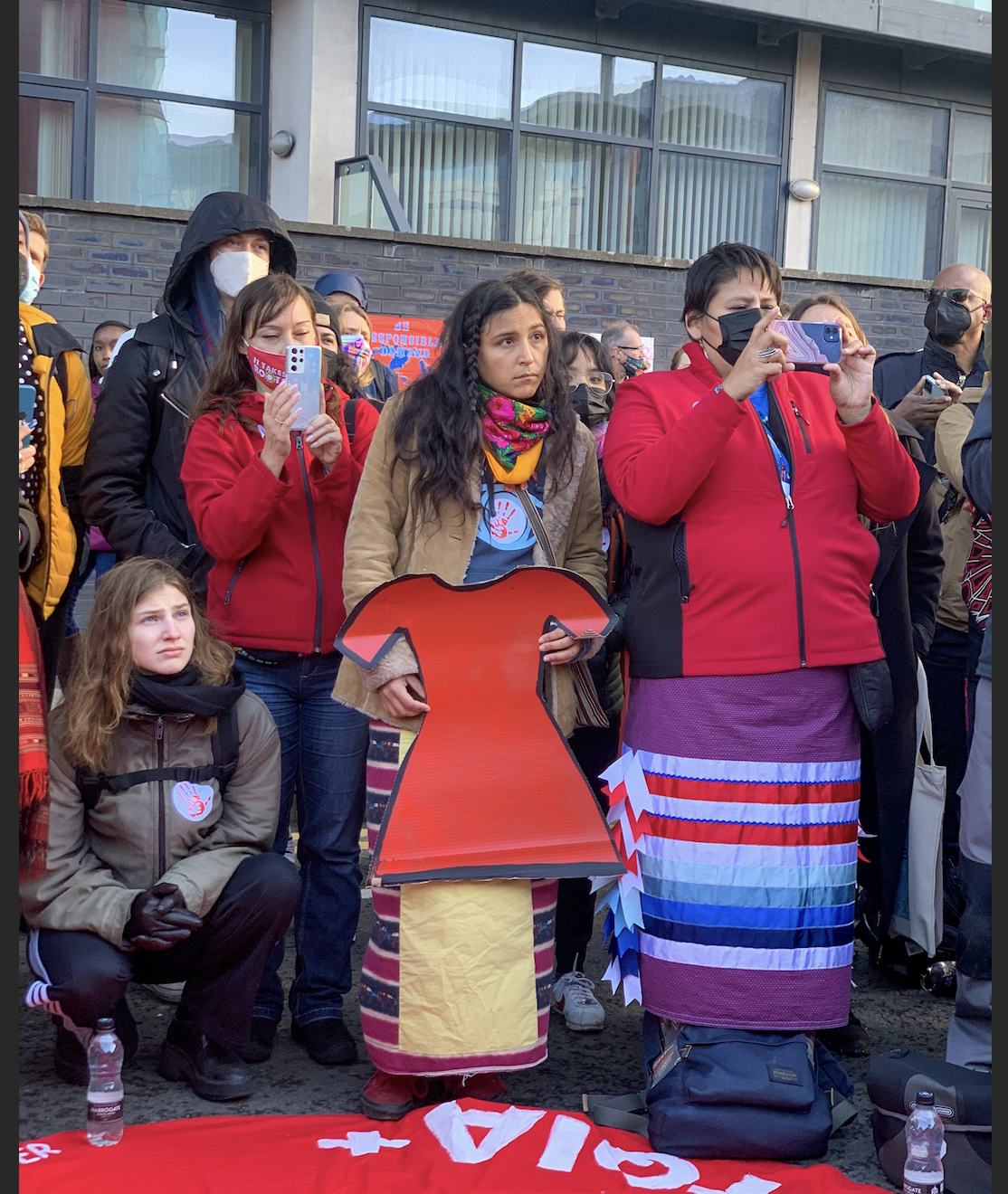 Crowd reacting to a speech on the impact of oil drilling on Indigenous communities. (Photo/Leala Pourier)
Crowd reacting to a speech on the impact of oil drilling on Indigenous communities. (Photo/Leala Pourier)
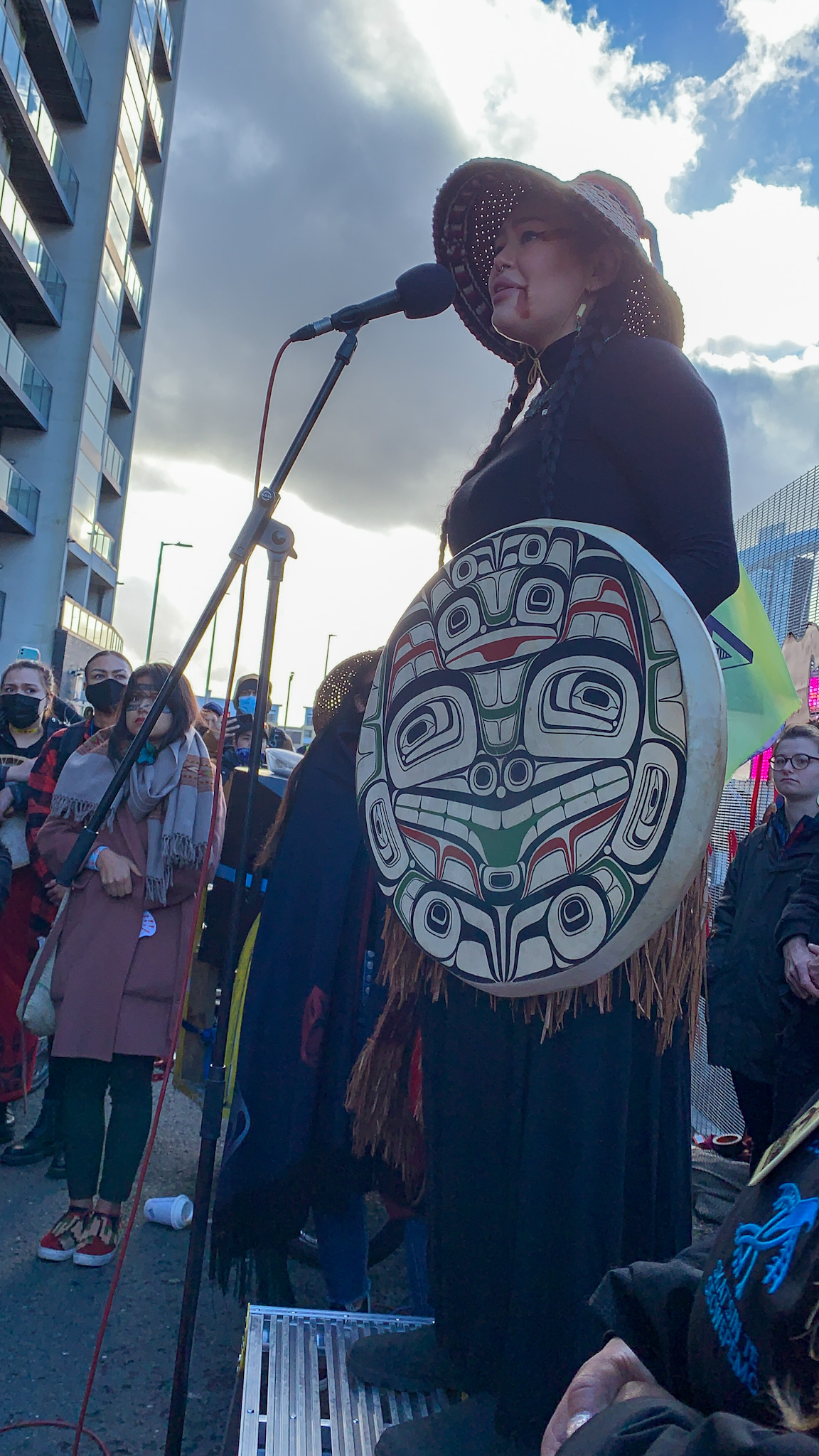
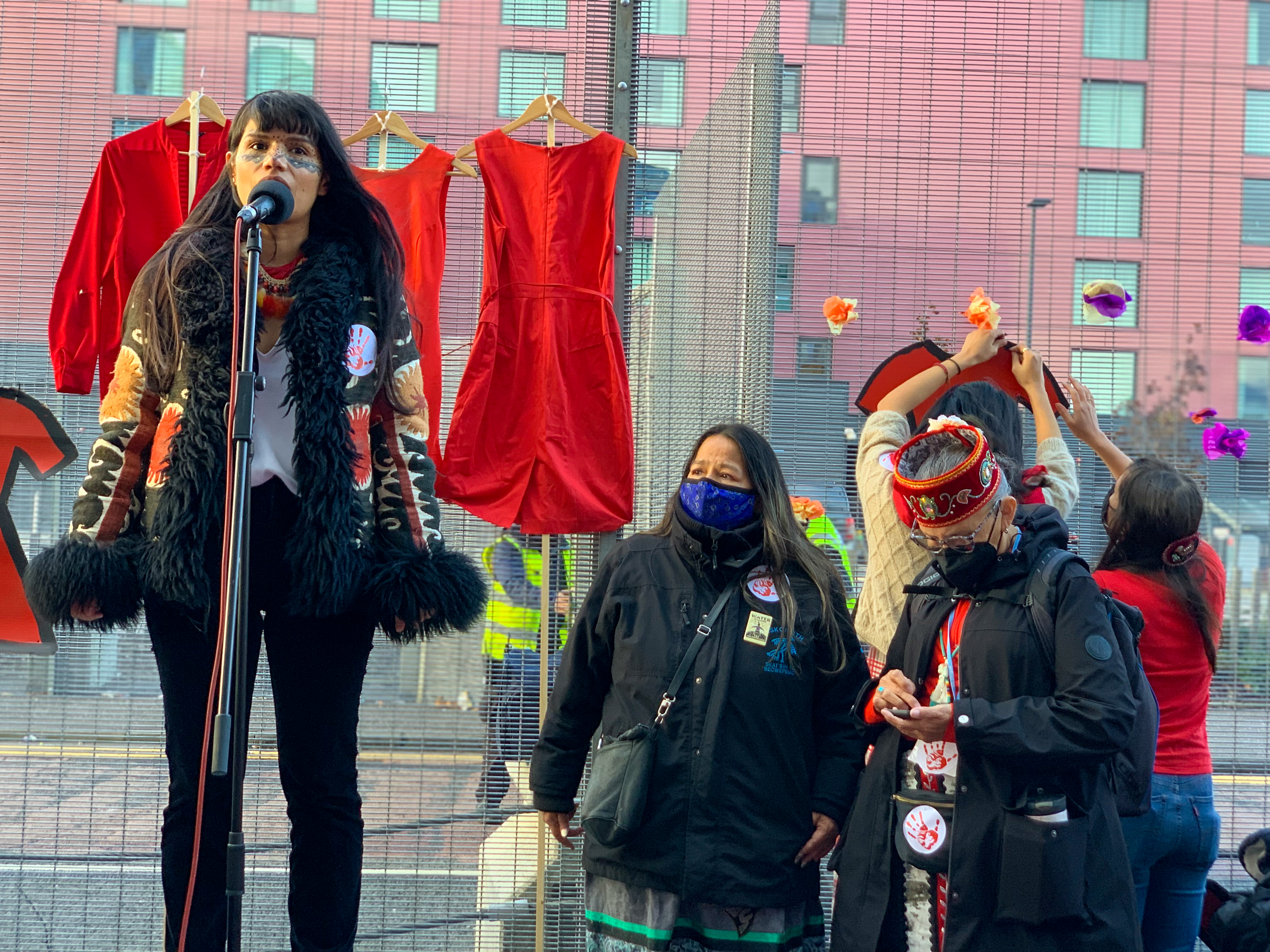
Leala Pourier (Oglala Lakota) is a youth activist and college student.
More Stories Like This
Native News Weekly (August 25, 2024): D.C. BriefsUS Presidents in Their Own Words Concerning American Indians
Native News Weekly (August 4, 2024): D.C. Briefs
NB3 Foundation to Host 6th Annual Native Youth Golf Championship
Federal Budget Proposal Threatens to Dismantle Native Workforce Programs
Help us tell the stories that could save Native languages and food traditions
At a critical moment for Indian Country, Native News Online is embarking on our most ambitious reporting project yet: "Cultivating Culture," a three-year investigation into two forces shaping Native community survival—food sovereignty and language revitalization.
The devastating impact of COVID-19 accelerated the loss of Native elders and with them, irreplaceable cultural knowledge. Yet across tribal communities, innovative leaders are fighting back, reclaiming traditional food systems and breathing new life into Native languages. These aren't just cultural preservation efforts—they're powerful pathways to community health, healing, and resilience.
Our dedicated reporting team will spend three years documenting these stories through on-the-ground reporting in 18 tribal communities, producing over 200 in-depth stories, 18 podcast episodes, and multimedia content that amplifies Indigenous voices. We'll show policymakers, funders, and allies how cultural restoration directly impacts physical and mental wellness while celebrating successful models of sovereignty and self-determination.
This isn't corporate media parachuting into Indian Country for a quick story. This is sustained, relationship-based journalism by Native reporters who understand these communities. It's "Warrior Journalism"—fearless reporting that serves the 5.5 million readers who depend on us for news that mainstream media often ignores.
We need your help right now. While we've secured partial funding, we're still $450,000 short of our three-year budget. Our immediate goal is $25,000 this month to keep this critical work moving forward—funding reporter salaries, travel to remote communities, photography, and the deep reporting these stories deserve.
Every dollar directly supports Indigenous journalists telling Indigenous stories. Whether it's $5 or $50, your contribution ensures these vital narratives of resilience, innovation, and hope don't disappear into silence.
 The stakes couldn't be higher. Native languages are being lost at an alarming rate. Food insecurity plagues many tribal communities. But solutions are emerging, and these stories need to be told.
The stakes couldn't be higher. Native languages are being lost at an alarming rate. Food insecurity plagues many tribal communities. But solutions are emerging, and these stories need to be told.
Support independent Native journalism. Fund the stories that matter.
Levi Rickert (Potawatomi), Editor & Publisher
